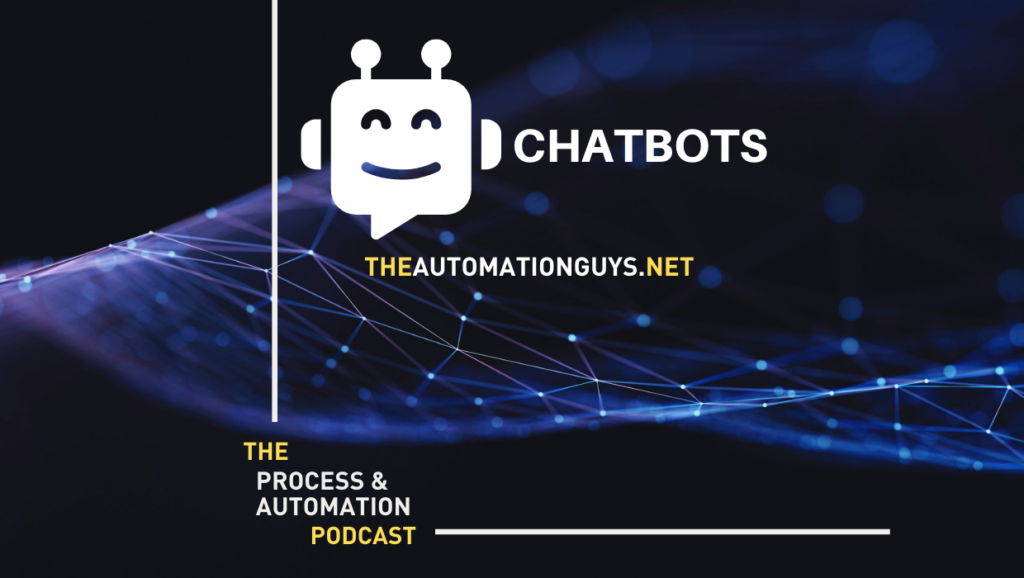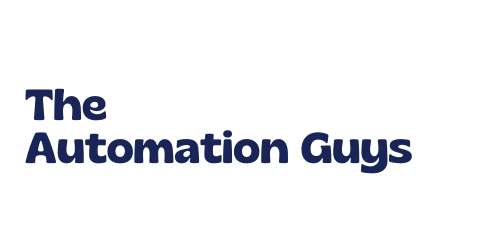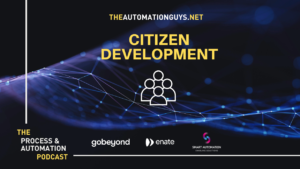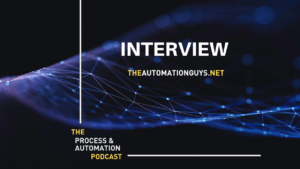Blog

How your business can benefit from AI chatbots - PART 2
In the 2nd part of the how your business can benefit from #AI #chatbots episode, find out about internal facing #chatbot use cases to become more efficient.
Share This Post
Do you have any questions? Would you like to give us feedback? Are you interested in workshops on the topic of automation? Are you an expert in the field of automation and would like to be on the podcast?
LinkedIn Arno: https://bit.ly/3aABArd
LinkedIn Sascha: https://bit.ly/36Jd31T
Velocity-IT: https://www.velocity-it.com/about-us/
convedo Group: https://www.convedo.com/about-us
Episode Transcript
particular skill or expertise to address that that’s possibly beyond that, that of a chatbot. Or it could be that, you know, as you automate your tier one resolutions for your help desk, of course, you then have capacity in tier two and three. So, you know, a journey I can think about is with a capacity in mind for human workforce is somebody talks to the boss and say, I want to talk to you, and then it pops up immediately what the person’s telephone number is, and you get a phone call back straightaway, that’s a great, great experience, because I’ve chatted to a chatbot. It’s created this, this this context for, for that human agent to actually progress this case and resolve it. And the human actually said, let me just speak to one of your operatives, operative get a message, they found a person back straightaway, they’ve got full context of what’s being discussed, and it’s a really good timely resolution, you know, off of that particular problem. And again, if you look at the parameters of that journey, in it’s all positive, you know, everything here is positive, there’s no broken pieces of the process where things fall through gaps. You know, it’s just a very smooth, you know, seamless journey, up until that point where the actual technical issue, for example, is resolved?
Not very good. So, he said, there’s a very, very broad spectrum of, of use cases there. These were just a few really good examples, we thought. And, yeah, so that brings us now into the internal facing use cases. So, the one before was sort of more aware of customer facing external facing, but you can use chatbots as well, internally. And yeah, I think that’s that it’s completely new dimension I’ve never thought about before we’re going into this topic a while back. I always thought okay, because chatbots are only useful for customer service and customer, customer journeys. But yeah, so what do you think?
I think, you know, internal facing, I think that there’s so many opportunities for the internal facing domain as well, because, of course, you know, chat bots are becoming increasingly capable, they are able to assist teams that work with internal employees. And you know, streamlining all of these workflows and saving human employee time. You know, for example, if somebody works remotely, and streamlining that experience, you know, that that that actually ensures that the business keeps on moving forward, and, you know, resources is not lost. And, you know, one of the biggest use cases we see is within HR. You know, an HR is a great place to deploy internal facing chatbot. Because let’s look at a scenario. Employee just have a simple question, how many holiday leaf or holiday days do I have left for the year? And, you know, that’s, that’s a pretty common inquiry. And they’re normally, you know, they will send an email to HR, somebody in HR or have a look at it. But if you have an HR bot that can field the sort of tier one requests, that chatbot can be connected straightaway to the to the HR system. Once we know who the employee is, of course, it’s all internal. So this authentication, the chatbot uses its natural language processor, which is all AI driven to interpret, you know, what the actual intent is of a member of staff and this instance they asking, you know, how many vacation days worth left? And the chat book will give them the answer. Very quickly. Very effective to the point you know, the request is so instantly. Again, you know, that keeps everybody that engages with a bot, away from these administrative duties, to then wait for the HR email, and chase the email, potentially, because I try and come back in a timely, timely fashion. You know, that’s one example. Another example is logging or booking a new leave request. Very simple. You know, when do you want to go? You know, obviously, how many days, and you can make that experience quite exciting as well for all the employees. So we see, you know, a lot of use cases with inside HR for her these internal facing, you know, chatbot driven assistance for staff.
Yeah, that’s, that’s really good. And we see we see, as well. Mr. was, was the was the lockdown last year when, when they started. So, there’s a there was a huge uptake in St. Louis, or Microsoft Teams, and, and slack all these collaboration platforms. And all what we do there as well was with our colleagues, we are communicating in the same way. So, I’m writing a message and then something comes back. So, it’s a typical chat there as well, where we context driven in most cases, we talk about specific in specific channels in Microsoft Teams, about customer tickets, which are coming through teams these days, or specific projects. And, and this allows us as well, so by these chat bots, they’re not necessarily like this little icon there you see in the bottom right corner, in your intranet or on your internet pages. So, by combining the chatbot capabilities, probably you’re aware of some of the bots firing up in slack also, so that they’re taking care of a few things. So, this is exactly where then this sort of chat capability comes in, you could have really tight integration into your Microsoft Teams to actually kick off that conversation. So, you can be in the same place as always, when you talk directly with your HR team. So, the bot can take over exactly the same place and filter down these requests. And everything is in your context, in your own chat. Everything is stored everything is Yeah. in the right place for you as a as an employee, and for the HR staff. So yeah, it’s very, very powerful by bringing the capability in the tools we already using a lot. And Ms teams is a really big one. And yeah, I think we also have that capability. These days, we can plug that technology into our Facebook chats into our WhatsApp chats in our telegram or whatever is out there and then these days, but this allows very, very seamless, seamless connection isn’t that so your was your team? Same way as I have done before. And the next big topic really is, is not just the HR when we think about all the hot men in the business. So the general business administration, there’s so much stuff to do, which is very time consuming. And combining that with was a chatbot like scheduling meetings. So this is a good one or when should we should we have our next team meeting or our next away day? So then then the big thing starts, isn’t it?
So then usually, I look into my calendar, I send out a doodle everyone comes up with was the right slot and but here, we could actually schedule a meeting and let the chat bot do it isn’t it and CSM can be very clever, it can do a lot of that kind of sort of fiddly, you know, heavy lifting for you. So you could just focus on actually doing what you’re supposed to do at work and focusing on that. But you have at least for General Business Administration, again, the use cases are vast. And I guess the reality here is that, you know, all of the backend systems exist, you know, to obviously schedule a meeting. And you know, it this is simply just a question of plugging that chatbot in and publishing that, that connection. If you want to book a flight, for example, you know, once we start flying again and the skies are open, you know, how convenient would that be to just use an internal chatbot to book your business meeting, it asks you all the questions. It does all the checks for you. You know, the chat bot is trained so that it covers that experience. Very seamlessly. And also, beyond that, you know, once your, your trip, you’re coming close to your trip, you can just send you the reminders, ask your questions to make sure that you’ve, you know, you’ve got your copies of your itinerary, you know, so that’s just another example. So, there’s so many sort of general arrangements in general admins or administrative tasks that this administrative assistant can provide you. You know, like you say, you could have integration with teams and, and slack for example. So, so, so again, very broad, you know, very broad set of use cases, you know, with inside Business Administration.
And the good thing is similar, like, like, like the other platforms we talking about here, on this podcast? Yeah, you mentioned this honour as well, already, they have very low code, focus, so it’s more common configuration. And, yeah, and, and these technologies we are working with, so they already come up with a huge set of ready to go templates. So if you think about, Okay, I need I need an assistant doing these flight bookings, here that is already maybe a rough template there, which is getting you started. A few more configurations obviously need to be done to adapt it to the right use case and to the department’s needs, but generally, is a good accelerator, they’re available. And this covers all sorts of use cases, not just for the chatbots, I think, in general was all the local platforms, RPA platforms. So there are so many templates available to get started in a matter of days, really. So the next one?
Well, the next one is to do with management assistance. So this is where we have managers, and they need to do, you know, a lot of approval centric type tasks, like budgets and requests, and, and usually, you know, they’ll either receive an email with an attachment, or they have to rely on an internal platform, to access the data, no doubt, they would have to go to a calendar, which has got a reminder for them to either approve the budget, or to do something that that’s key, you know, for their job as a manager. So if, you know, by deploying chatbots, you can negate the need for managers to do it in this inefficient way. And really introduce new levels of productivity for them, you know, so rather to wait for managers to, you know, to return to the office or to went back from holiday, it’s very easy for a virtual assistant chatbot just to pop up and really give them all the tools they need to have on the go to do these budget approvals. And these management tasks, approve purchase orders, customer reports, you know, and many more types of things that that managers do in a business. So again, you know, it is the same sort of, sort of topic, where, what the same outcome where you free up these employees’ time, and, you know, you’ve freed him up to do other more intuitive things. You know, and really improve their happiness and their satisfaction as employees, right?
Absolutely, yeah. So this is, this is pretty much the outcome for most of our automation projects, to really increase that sort of capacity we have in businesses, by just getting rid of all this other stuff, which can be automated. So yeah, but how do we, how was like was always these new technologies. How do we really get to get started with those what was was chatbots? How to set this up? So yeah, it’s always, indeed, we need to buy in from everyone and experiment a lot to get it right. But is it being very easy with those templates? I think it is. Yeah, you can just try it out very, very quickly and see if it works for you. So, but you said something very good. earlier on, was don’t make it to human.
So yes. I think you missed that one.
I think you know, in people’s perceptions of chatbots is that, you know, I think when chatbots started off, people did try people did them to try and make them to human almost hiding the fact that it’s a bot. And I think that was the wrong approach and the wrong strategy. I think once that was flipped on its head, and people knew it was a chatbot. Providing that this bot actually resolved the query, I think most people didn’t really mind them. I think in the first generations of chatbots, that we saw, there was an AI driven, and they were more sort of, if then else, if then else driven. You know, it really turned off a lot of people from using them. Because it, it didn’t take long for, for people to realize they’re not actually speaking to Alex here, they’re just speaking to a piece of computer software. Because bringing the bot out and making it intelligent, was actually the right strategy. And I think that, you know, we seeing that, you know, by deploying these, these smart chat bots, and also declaring the fact that they are actual bots, and there is a possibility, if you don’t get your query resolved by a bot that you’re going to be transferred to human, you know, people got a lot more comfortable, sort of engaging with the chatbot.
Yeah, I guess they’d understand as well. Okay, here’s some mechanism for me, which sort of works in most cases, or 80% of the cases 24. Seven. So that’s, that’s a really huge benefit for me as a customer. So then they accept that, that there’s sort of a mechanism about for for them, they’re available. And, and then yeah, I think that’s, that’s okay. That’s okay. I see it in the same way. I thought first, as well, from our business perspective, if we have a bot, we sort of have to have to hide that.
But we’re kind of piece of code, you need to have to, to hide the fact, it’s too complex. And if you have a very simple chat bot, it’s very clear immediately, if someone puts something in which doesn’t really answer sort of the question and the structure the board was expecting, it is immediately clear, and it’s just a dumb piece of code. Do already falls apart if someone else asking a simple bot would ask, please give me my email address, please give us the email address, and then someone answer’s no, then then the board is sort of in the loop, oh, this is not a valid email address, please give them you. So this, you can’t really hide that anyway. So only if you have like a super in there, and we’re not at that stage. So everyone accepts that. Absolutely. And I think that also brings me to the next point, watch, watch the audience, really how people are interacting with the bot. And that, that that really that data. And that behaviour, if that flows back into sort of the learning of your system. So then an ai ai powered bot is then is even getting more intelligent, and can suggest even more things to the customer potentially, at some point on it on its own, to come up with a sort of a next back best sort of recommendation on solving problems. But in general, he tells us so much about what’s going on currently in the on the customer side. So we have certainly lots of conversations going on about a specific problem. Yeah, so we definitely need to we need to see how our customers are experiencing it and behaving. So that that all can be very valuable.
Yeah, and that is true. I think that brings us to the next point is really to start small and using it iterative approach. grow bigger. You know, you can get started with your first chatbot you know, with within a day. There are so many platforms out there that you can use, it’s all low code driven. The better ones are Scott natural language processing engines, very sophisticated. So the intent of the conversation and the context can be extracted very quickly. And my recommendation would be to perhaps look at an internal facing bot first. HR is a very, very good place to start. Simple use cases like you know, leave management, how many leaf days do I left? What’s the policy on sick leave, you know, employee well-being you know, these are simple things that you can have a very soft landing for your chatbot with inside your business and as people become more accustomed to These chatbots make them more capable, broaden their reach, start rolling them out in other areas, other departments in your business finance, you know, keep on iterating keep on learning the lessons. You know, you talked about watching your audience, see how people interact with the bots, and just these bots. And I think kind of build that confidence that the chat bots are actually a very, very seamless way to get problems resolved and to go get help, you know, without having to send out requests and waiting for responses from somebody that’s going to be late. And also talking about privacy earlier, in, in our podcast, I think, you know, privacy is a big deal. And, you know, we need to make sure that compliance is a priority, you know, we need to make sure that that data is secure. And we need to make sure that when we talk to a person, that person is actually the person that they say they are so all of these protocols need to be built into your bot. But luckily, with the chatbot platforms out there, that simply just another construct that you drag and drop into your chat bot configuration, to tell it how to authenticate a user while the user is logged on to their local workstation, that users obviously know their password. So, by definition, you know, it is the person that you think you’re talking to, or there could be another verification that you can build in just to be on the safe side. But again, you know, all of the compliancy around data protection. Luckily, you know, most of the chatbot platforms we work with, all of that is salt for all of that is catered for, and religious gives you the opportunity to focus on these journeys that you want to create with these bots. And, you know, just kind of touching back on where you start, start small land, something small HR, again, really good space, something very simple, get people used to it. And then from there on, you know, grow the reach of the bots.
And that’s great. Yeah, thank you very much. I think this is a really good, good point to sort of come to in the end was this episode. I hope you liked this episode, the first one on chatbots. More will follow. So very, very interesting topic. And yeah, if you if you’re interested about that more, send us your feedback. And we will plan in more chatbots episodes earlier. And if you’d like to have a chat about chatbots here, reach out to know myself via our social profiles, or visit our website, the automation guys.net for more details. Yeah, thank you very much for listening for the episode to the episode today. And yeah, we hope you will tune in next time and see you soon. Unfortunately, that’s it again, was this episode of the process in automation podcast. If you liked this episode, please give us a five-star rating. And don’t forget to subscribe to this podcast, so you don’t miss any upcoming episode. We hope you will tune in next time and until then, let’s automate.
- April 14, 2021
- 9:01 pm


